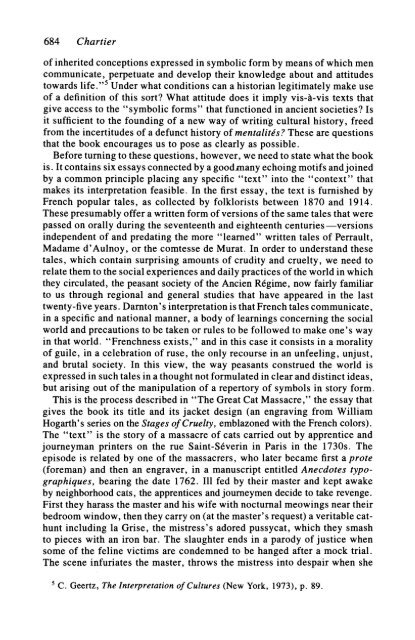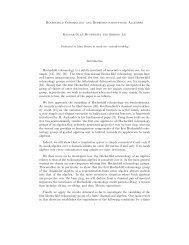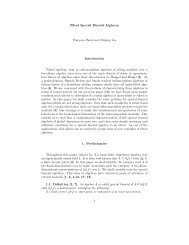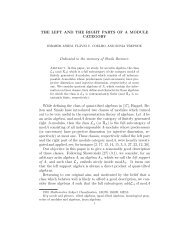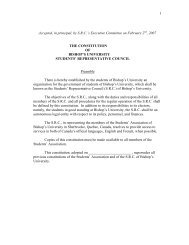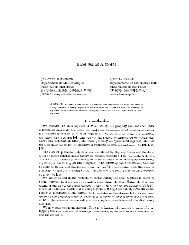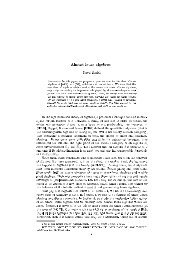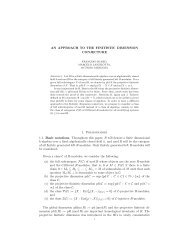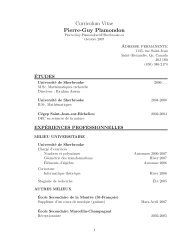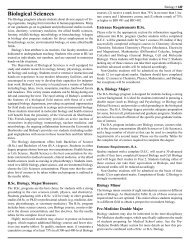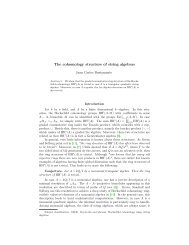Review: Text, Symbols, and Frenchness Roger Chartier The Journal ...
Review: Text, Symbols, and Frenchness Roger Chartier The Journal ...
Review: Text, Symbols, and Frenchness Roger Chartier The Journal ...
You also want an ePaper? Increase the reach of your titles
YUMPU automatically turns print PDFs into web optimized ePapers that Google loves.
684 <strong>Chartier</strong><br />
of inherited conceptions expressed in symbolic form by means of which men<br />
communicate, perpetuate <strong>and</strong> develop their knowledge about <strong>and</strong> attitudes<br />
towards life."j Under what conditions can a historian legitimately make use<br />
of a definition of this sort? What attitude does it imply vis-a-vis texts that<br />
give access to the "symbolic forms" that functioned in ancient societies? Is<br />
it sufficient to the founding of a new way of writing cultural history, freed<br />
from the incertitudes of a defunct history of rnentalite's? <strong>The</strong>se are questions<br />
that the book encourages us to pose as clearly as possible.<br />
Before turning to these questions, however, we need to state what the book<br />
is. It contains six essays connected by a goodmany echoing motifs <strong>and</strong> joined<br />
by a common principle placing any specific "text" into the "context" that<br />
makes its interpretation feasible. In the first essay, the text is furnished by<br />
French popular tales, as collected by folklorists between 1870 <strong>and</strong> 1914.<br />
<strong>The</strong>se presumably offer a written form of versions of the same tales that were<br />
passed on orally during the seventeenth <strong>and</strong> eighteenth centuries-versions<br />
independent of <strong>and</strong> predating the more "learned" written tales of Perrault,<br />
Madame d'Aulnoy, or the comtesse de Murat. In order to underst<strong>and</strong> these<br />
tales, which contain surprising amounts of crudity <strong>and</strong> cruelty, we need to<br />
relate them to the social experiences <strong>and</strong> daily practices of the world in which<br />
they circulated, the peasant society of the Ancien RCgime, now fairly familiar<br />
to us through regional <strong>and</strong> general studies that have appeared in the last<br />
twenty-five years. Darnton's interpretation is that French tales communicate,<br />
in a specific <strong>and</strong> national manner, a body of learnings concerning the social<br />
world <strong>and</strong> precautions to be taken or rules to be followed to make one's way<br />
in that world. "<strong>Frenchness</strong> exists," <strong>and</strong> in this case it consists in a morality<br />
of guile, in a celebration of ruse, the only recourse in an unfeeling, unjust,<br />
<strong>and</strong> brutal society. In this view, the way peasants construed the world is<br />
expressed in such tales in a thought not formulated in clear <strong>and</strong> distinct ideas,<br />
but arising out of the manipulation of a repertory of symbols in story form.<br />
This is the process described in "<strong>The</strong> Great Cat Massacre," the essay that<br />
gives the book its title <strong>and</strong> its jacket design (an engraving from William<br />
Hogarth's series on the Stages of Cruelty, emblazoned with the French colors).<br />
<strong>The</strong> "text" is the story of a massacre of cats carried out by apprentice <strong>and</strong><br />
journeyman printers on the rue Saint-SCverin in Paris in the 1730s. <strong>The</strong><br />
episode is related by one of the massacrers, who later became first a prote<br />
(foreman) <strong>and</strong> then an engraver, in a manuscript entitled Anecdotes typographiques,<br />
bearing the date 1762. I11 fed by their master <strong>and</strong> kept awake<br />
by neighborhood cars, the apprentices <strong>and</strong> journeymen decide to take revenge.<br />
First they harass the master <strong>and</strong> his wife with nocturnal meowings near their<br />
bedroom window, then they carry on (at the master's request) a veritable cathunt<br />
including la Grise, the mistress's adored pussycat, which they smash<br />
to pieces with an iron bar. <strong>The</strong> slaughter ends in a parody of justice when<br />
some of the feline victims are condemned to be hanged after a mock trial.<br />
<strong>The</strong> scene infuriates the master, throws the mistress into despair when she<br />
C. Geertz, <strong>The</strong> Interprerarion of Cultures (New York, 1973), p. 89.


